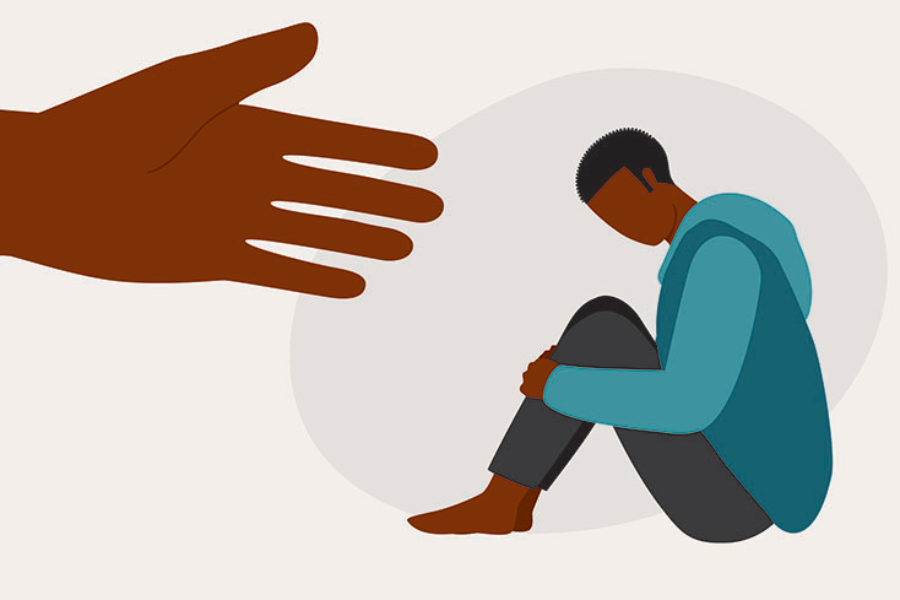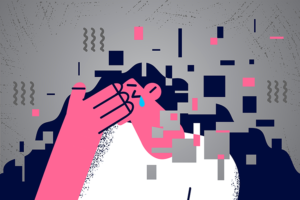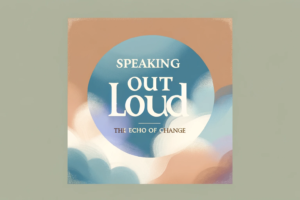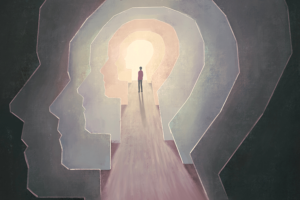By Julia C. White
Glennon Doyle’s words echo in my head on repeat, “Find what breaks your heart and that will be your purpose.”
On Sept. 8, 2017, my heart was not just broken — it was obliterated. On that day, I learned that my former partner, Alan, died by suicide. At 23 years old, Alan was one of 3,089 young men who took their lives that year.
Before that call, I did not fully understand how the suicide crisis was not just a headline for LGTBQI youth and veterans, but an overarching pattern across generations, socioeconomic status and gender. That year, it was the eighth leading cause of death for men in the U.S. and the second for young people between ages 10 and 34.
Since then, I have not been able to stop asking: How do we live in a country — in a world — where so many people choose to die? While this despair has led me to more questions than answers, there is something I have found to be absolutely true: Our current standards for treating mental illness are inherently flawed. Practices such as inpatient treatment, medication and talk therapy can be severely limited for many, and we must demand better.
My Experience
Throughout our friendship, Alan and I found common ground in various interests and life experiences: Our music tastes were nearly identical, we loved goofy and absurd TV (i.e., “Broad City” and “The Office”) and we both had our fair share of mental health struggles prior to meeting each other.
During my last semester of college, I fell into what, at the time, felt like an indescribable rut. Over the course of a few months, I received various diagnoses, prescriptions and huge hospital bills. I felt my inner world collapse and found no promise in trying to stay alive in the external one, either.
Looking back, what I really needed was rest, someone to hear my story, and connection to others experiencing something similar. Instead, mental health professionals told me my problems were solely biochemical in nature and that 15-minute visits with psychiatrists and new prescriptions would cure me. After multiple medication changes and two stints in a behavioral health unit, I quickly lost any hope that my mental health would improve.
Thankfully, I was able to get out of this rut on my own. The same cannot be said for many, like Alan, who needed more care than what is currently available and lost their lives due to these significant gaps.
Help Before A Crisis
The options for care can be expensive. While fees for talk therapy range anywhere from $75 to $150 — or much more, depending on the city, agency or private practice — there is no industry-wide standard for setting those price tags. Once medication is added to the mix, sessions with a psychiatrist are at least $200, but most likely double that value when the clinician specializes in certain diagnoses.
Even when insurance can cover a portion of these fees, simply finding an in-network provider is a challenge. In 2016, NAMI released survey data that far too many patients are familiar with: Respondents were 80% more likely to encounter trouble securing a mental health clinician than a medical professional in any other specialty. For the uninsured and underinsured, covering those costs out-of-pocket is a direct path toward lifelong medical debt.
Help During A Crisis
When someone is suicidal or experiencing a mental health crisis, the options for immediate care can range from calling or texting a hotline to voluntary commitment to a psychiatric or behavioral health unit to involuntary commitment against their will to a similar facility or jail.
What breaks my heart the most is knowing the options laid out for Alan, in his time of greatest pain, did not fit what he needed. Like Alan, so many of us are in those “in-between places” — when therapy and psychotropic drugs are not enough. Or when inpatient treatment represents an isolating and traumatizing experience that increases the person’s risk of suicide after discharge.
What Can Help?
My question is: What do we do for the people like Alan who need our help?
While I can’t say for certain, I believe a human-centered and restorative care option could have been life-saving for Alan if it had been available at the time. Organizations like Garrett’s Space, based in Ann Arbor, Mich., are founded by suicide loss survivors who are trying to address this need. Their mission is to create holistic and connection-based healing options for young adults in psychological distress. I believe the Garett’s Space model serves as a powerful and promising template for communities across the country, in addition to other efforts like Alt2Su, Project LETS and the Inner Compass Initiative.
What all of these groups have in common is they center care around people with lived experience. They cultivate community rather than isolate and they empower patients instead of over-pathologizing them.
We must ask the survivors of the mental health care system what is best (and what they wish their experience had been) and follow their lead. When our mental health care systems prove to be doing more harm than good, we need to question the system’s priorities and purpose, and we need to build anew.
Julia White is a graduate student of social work at the University of Texas at Austin. With a focus on child and adolescent mental health, her work is rooted in transformative justice through a feminist and relational-cultural lens. She seeks to bridge gaps, build community and is always searching for the perfect oat milk latte.
Note: This article was originally published in the Fall 2021 issue of the Advocate.
Source: https://nami.org/Blogs/NAMI-Blog/March-2022/It-s-Time-for-New-Standards-for-Mental-Health-Care




